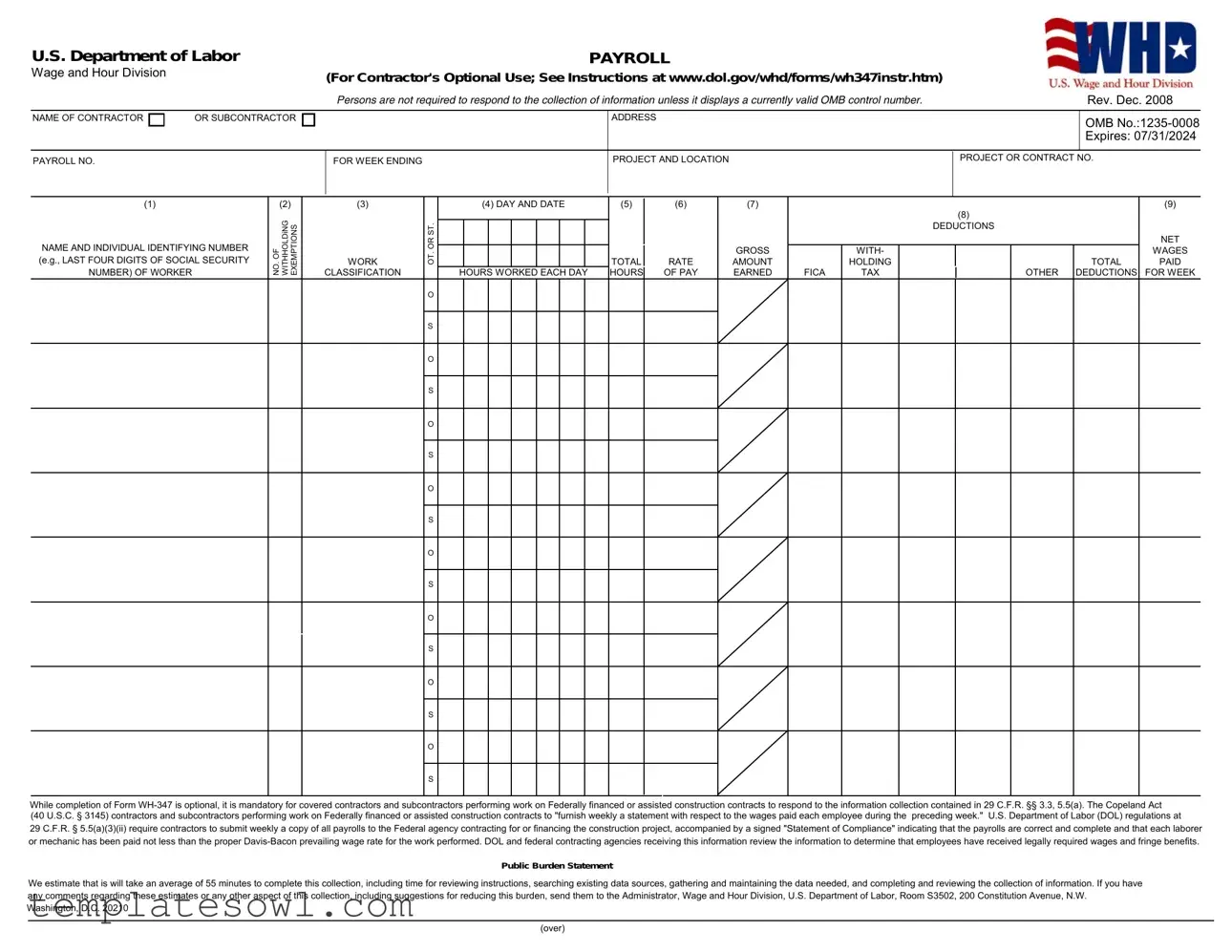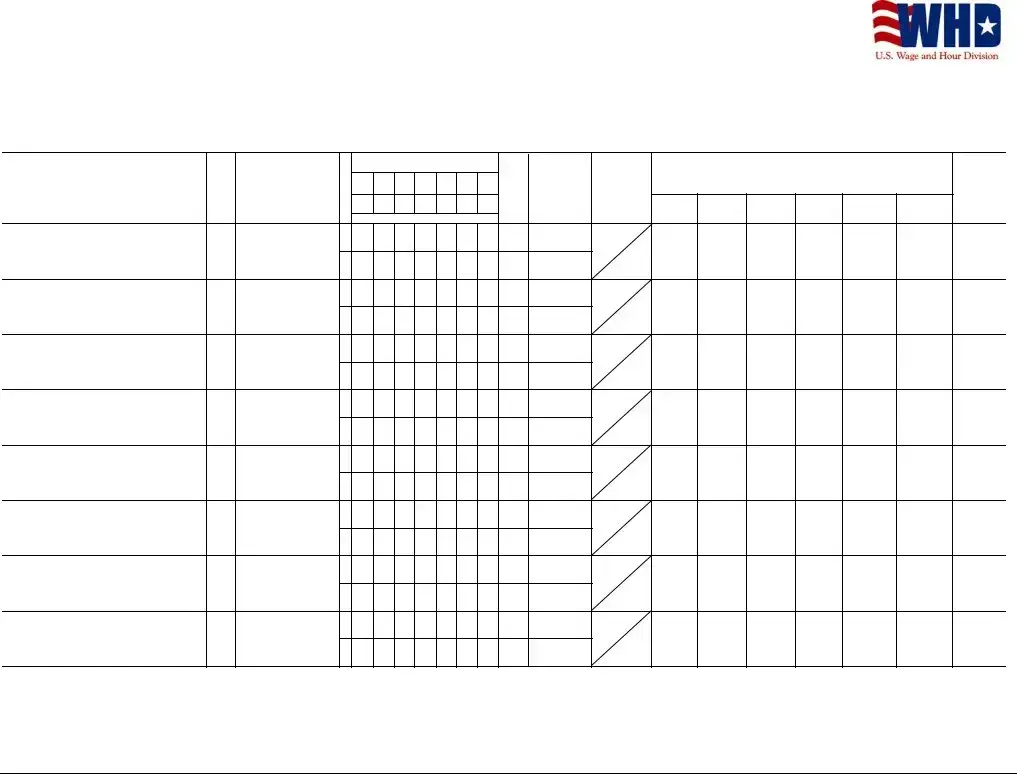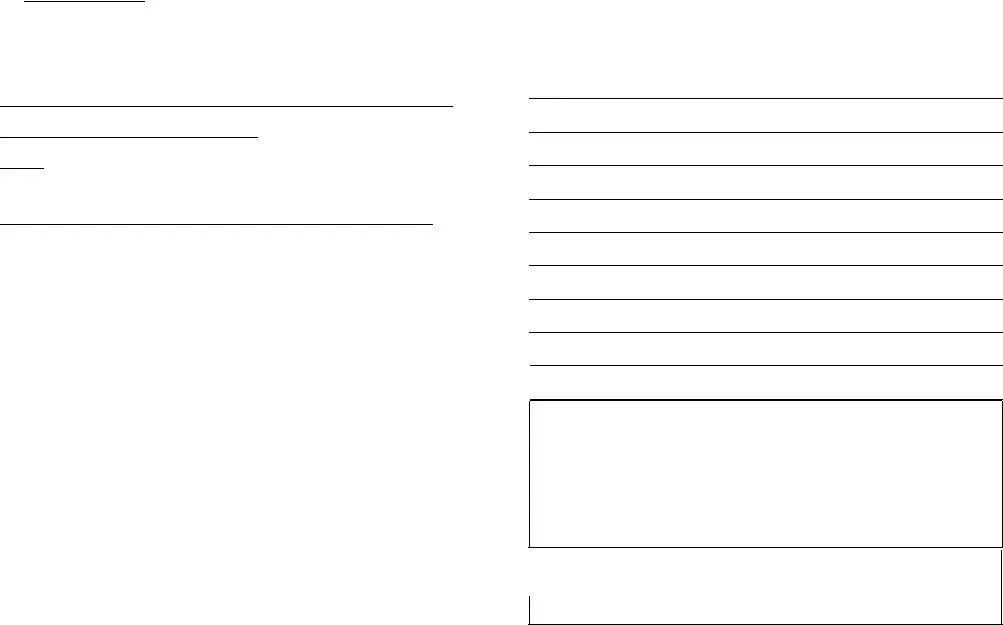What is the Certified Payroll form and who needs to use it?
The Certified Payroll form, also known as Form WH-347, is a document used by contractors and subcontractors on federally financed or assisted construction projects. It serves to report the wages paid to workers and ensure compliance with federal labor laws. Although using the form is optional, it is mandatory for covered contractors to submit accurate payroll information weekly to the federal agency overseeing the project. This form helps ensure all workers receive the proper wages as required by the Davis-Bacon Act.
What information is required on the Certified Payroll form?
The Certified Payroll form requires detailed information about each worker's wages for the reporting week. This includes the worker's name, identifying number, work classification, gross wages, deductions, and net pay. The form also needs to specify the number of hours worked each day, overtime hours, and any fringe benefits paid. It is crucial that the information is accurate, as it is used to determine compliance with wage laws.
What is the significance of the "Statement of Compliance" included with the Certified Payroll form?
The "Statement of Compliance" is a certification that accompanies the payroll submission. By signing it, the contractor confirms that the payroll is complete and accurate and that all workers have been paid at least the prevailing wage for their classification. This ensures accountability and compliance with labor laws. Falsifying this statement can result in serious legal consequences for the contractor or subcontractor.
How often must the Certified Payroll form be submitted?
Contractors must submit the Certified Payroll form weekly. Each submission should cover the previous week’s payroll data. This regular reporting is required to maintain transparency and ensure that workers are paid fairly and in accordance with federal regulations. The federal agency overseeing the project reviews these submissions for compliance purposes.
What happens if a contractor does not submit the Certified Payroll form correctly or on time?
If a contractor fails to submit the Certified Payroll form accurately or on time, they may face various penalties. Potential consequences include withholding of payment, requirement to pay back wages to workers, or even disqualification from future federal contracts. It is crucial for contractors to adhere to the reporting requirements to avoid these issues.


